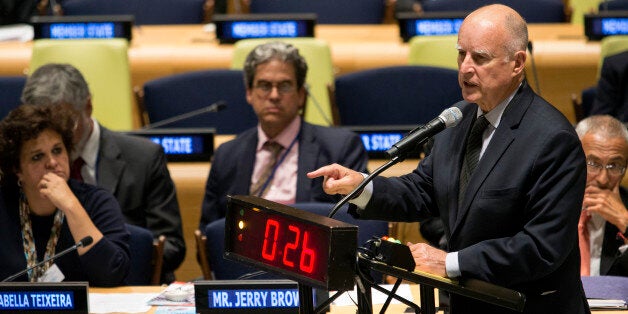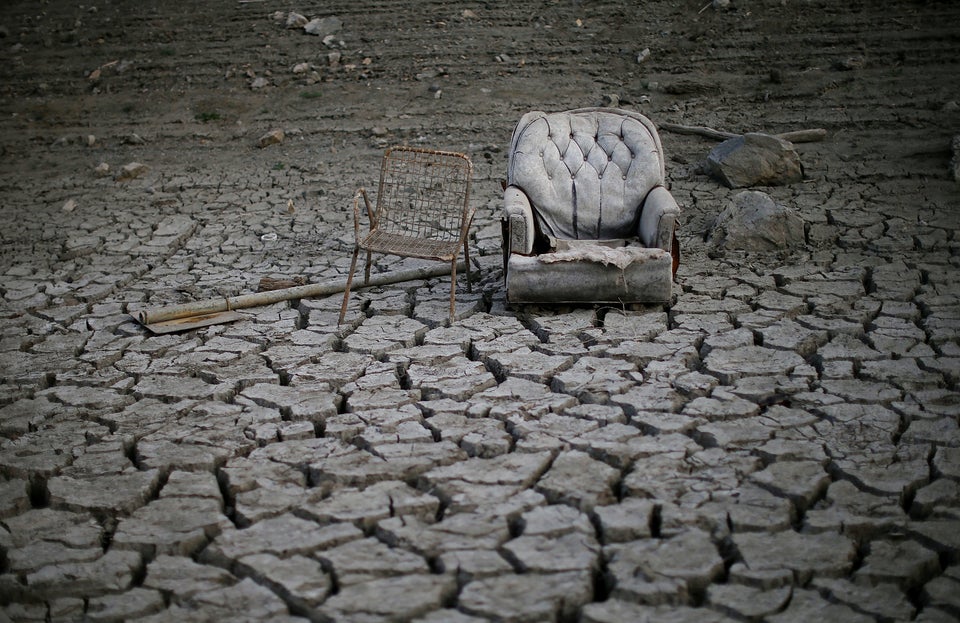
Gov. Jerry Brown (D-Calif.) gave these remarks at the United Nations Climate Summit in New York on Sept. 23.
UNITED NATIONS -- California very strongly supports the efforts of states and cities to do their part to combat climate change. In California, we have emphasized in recent years building standards and appliance standards and a renewable energy goal. But now instead of just asking how many solar installations we have or how many wind installations or geothermal, we are putting the emphasis on our climate footprint. And as of today, California generates about 450 million tons and we're going to reduce, by 2020, at least 25 million tons. And then in the next six months, we're going to set a goal for 2030 that will be more ambitious, that will require more technology and will also require heightened political will.
California has adopted a cap-and-trade system under the former governor, Governor Schwarzenegger. We passed what was called Assembly Bill 32 that set in motion a number of projects, including a cap-and-trade system which has been working now for two years. We've had several auctions, the price of carbon has remained steady at something over $13 a ton and the state has actually collected over $800 million. And that money is being directed into projects -- renewable energy, efficiency, low-income housing near transportation hubs, high-speed rail and other projects to facilitate a greener future.
The challenge of continuing down the path of tightening standards for efficiency -- we will increase our one-third renewable energy goal for the electricity sector beyond the one-third. We're at 23 percent renewable today, we should be at 33 percent within the next four years and then we'll consider going the next step and the next step beyond that.
I believe that from the bottom up, we can make real impact and we need to join together, not just other cities in America -- we're signing MOUs with Quebec and British Columbia, with Mexico, with states in China and wherever we can find partners, because we know we have to do it all. From the bottom up, from the top down and the collective effort of the world community to deal with the existential threat of climate change.
